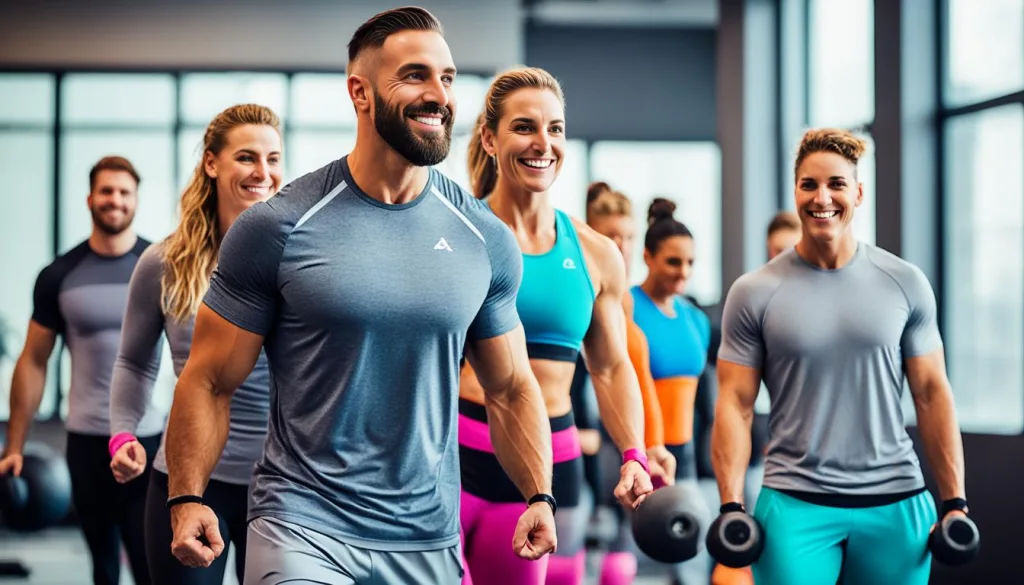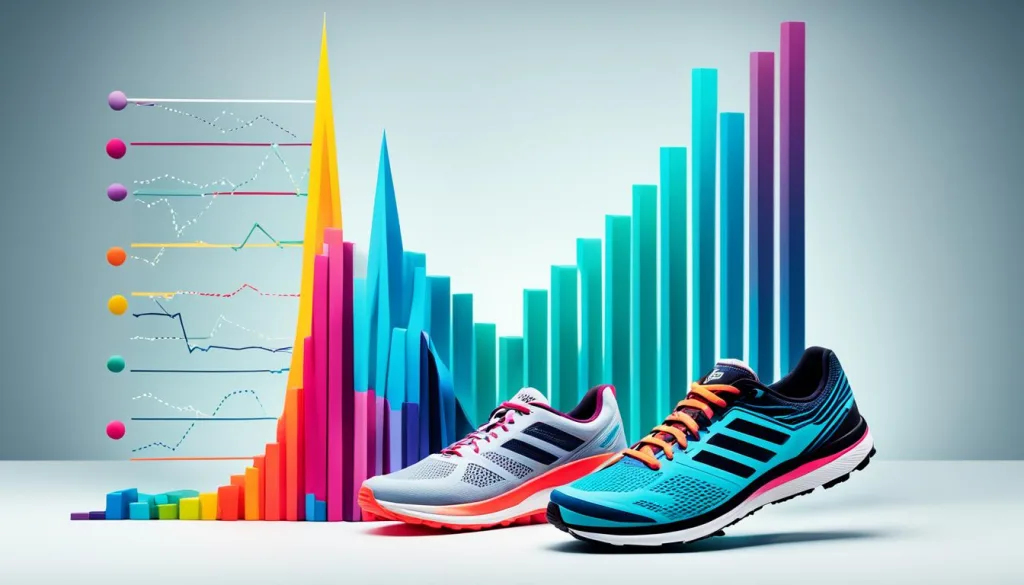Global Shifts Towards Gender-Neutral Sportswear
Connect With Us Today
Consider us for your next production run. Why wait? Send us your questions here.
The mix of fashion and identity sparked a big change in gender-inclusive athletic wear. This marks a big change in sports clothes. The start of unisex sportswear trends goes back to the 1960s and 70s. Back then, the goal was to mix gender lines in fashion designs1. Now, having diverse sportswear options goes beyond a style statement. It’s a nod to equality in sport fashion, ushering in a time where outfits become ungendered athletic gear, open to everyone. This change reflects a shift in generations. Most of Gen Z, an important group of shoppers, now see more than two genders. This stresses how key inclusivity is in fashion today2.
Key Takeaways
- Inclusivity at the Forefront: Embracing all genders in sportswear designs.
- Historical Influence: The unisex trend has deep roots in past decades but continues to evolve1.
- Societal Shift: Changing perceptions of gender contributing to the demand for diverse apparel2.
- Generational Impact: With Gen Z’s embracement of non-binary identities, fashion is adapting rapidly2.
- Market Expansion: A surge in gender-neutral options offers growth opportunities for forward-thinking brands.
- Equality in Athletic Fashion: Breakthroughs towards more egalitarian sportswear choices.
Redefining Athletic Wear: The Inclusive Activewear Movement
The global activewear market has grown to over USD$350 billion. This growth reflects a major shift towards more inclusive and diverse athletic wear3. Industry leaders and newcomers are now offering non-binary and gender-neutral sports clothes. This meets the changing wants of customers. Big sales jumps from brands like ASOS and lululemon show this market is thriving, welcoming diverse sports apparel3.

Embracing Diversity in Design: Sportswear for All Identities
Between 2019 and 2020, activewear sales in the UK shot up by 17%3. This increase shows people want more varied sportswear options. Big clothing brands like The GAP and American Eagle Outfitters have added activewear to their lines. This move meets the growing demand for inclusive athletic wear. Even Adidas, Nike, and Under Armour have expanded their women’s apparel, catering to diverse customer needs3.
Impact on Marketing Strategy: Beyond Conventional Targeting
The rise of inclusive activewear is changing how brands do marketing3. Adidas has shared that its women’s line is growing faster than men’s. This highlights a big chance for brands to rethink their marketing. By looking into topics like health and human rights, brands are learning to speak to an aware customer group in new ways3.
Celebrating Individual Expression through Non-Binary Sports Apparel
Research into women’s experiences with athletic wear is changing brand stories. It shines a light on the importance of body confidence, identity, and how women of color engage with fitness3. This research drives the push for more inclusive sports clothes. It marks gender-neutral fitness wear as a way to express and empower oneself3.
The Economic Implications of Unisex Sportswear Trends
The fashion world is changing fast as unisex sportswear becomes big news. Big brands are getting in on the action, launching 11 gender-neutral lines from March 2020 to July 2021. These collections span clothing, beauty, and accessories4. This boom isn’t just about what’s trendy. It’s a smart move to grab the attention of about 1.2 million LGBTQ folks in the U.S. who say they’re nonbinary4. They’re a big reason why sportswear that anyone can wear is looking like the future.
When we look into what shoppers want, young people stand out. About 61% of Gen Z believes clothing styles shouldn’t be limited by gender4. In a study, 45% of Gen Z students in the U.K., U.S., and Australia want clothes marketed as gender-neutral. This shows a big change in thinking, matching what 30-year-olds want at brands that avoid gender labels4. In the U.K., stores like Gender Free World are changing shopping by letting buyers pick clothes that fit their body shape and size perfectly4. This move to welcome everyone shows where the fashion industry is headed.
Big stores like Pacsun and Gap are also seeing the value in clothes for everyone4. Experts believe this trend opens big doors for all kinds of stores, not just the fancy ones. They think it’s time for shops to rethink how they make and sell clothes to fit everyone better4. More and more, products are being sold without labels like “male” or “female.” And young people under 30 are really supporting this change, with studies showing that 5.1% identify as trans or non-binary5. This hints at a huge market, including the 1.6% of U.S. adults who identify the same way5.
Leading the charge, big names like H&M and Victoria’s Secret brand PINK have kicked off their own gender-neutral lines5. The Phluid Project has gone further, starting a non-profit to help LGBTQ+ causes with support from big companies like Saks Fifth Avenue Foundation and Smirnoff. They give almost all donations to help the community5. Phluid is also training big companies like Macy’s and Nike on being more welcoming to everyone5.
Gucci is doing something cool by starting a section called Mx for non-binary people5. This move is a big deal for both culture and business. As more people want clothes that fit everyone, brands are facing new challenges and chances. Working together to welcome everyone will help decide where sportswear is going next.

| Brand | Gender-Neutral Initiatives | Consumer Segment Focus | Support for LGBTQ+ Community |
|---|---|---|---|
| Gender Free World | Personalized sizing chart | 30-year-old average consumer | – |
| Pacsun & Gap | Launched gender-neutral collections | – | – |
| The Phluid Project | Non-profit foundations; Corporate training | Under 30 demographic (5.1% identifying as trans or non-binary) | Grassroots organization support |
| Gucci | Launched Mx section | Non-binary individuals | – |
In the end, the move to gender-neutral sportswear means a lot. It’s not just about new styles. It’s about welcoming everyone and showing it. The fashion industry is key in making sure everyone can be their true selves, all over the world.
Understanding Gender Fluidity and its Societal Acceptance
The fashion world is always changing. Now, gender fluidity and societal acceptance are leading this change. Instead of just “male” or “female,” people see gender as a wide range of identities.
This new view is changing how people shop, especially among Generation Z. In 2019, 56% of individuals in Generation Z bought clothes not meant for their birth gender6. Also, 41% of Gen Z respondents didn’t see themselves as just male or female. Over half felt they were not strictly heterosexual in 20216.
Growth Potential: The Forecasted Rise of Gender-Inclusive Athletic Wear
The popularity of gender-inclusive athletic wear shows a big step towards embracing everyone in fashion. Designers are making clothes for all genders, not just men or women7. These collections have inclusive sizing and designs, making sure everyone can find something that fits7.
To make shopping welcoming for everyone, brands are removing gender-specific areas in stores7. This approach blends fashion with important social ideas. Influencers and well-known people are also sharing the word on gender-neutral fashion. They’re showing it’s for everyone7. Plus, fashion schools are talking more about gender diversity and making it a key part of learning7.
Want to know more about how gender-fluid fashion came to be? Check out this detailed article. It also shows how accepting different fashion styles is gaining ground worldwide. Another article discusses the move towards fashion that doesn’t stick to old stereotypes.
The connection between gender fluidity and societal acceptance hints at a future full of change. A future where everyone is accepted. It’s not just about clothes. It’s about showing who we are, celebrating everyone’s unique self, and coming together as one.
Challenges and Opportunities in Gender-Neutral Workout Clothing
The birth of gender-neutral workout clothing marks a big step for fitness world inclusivity. Designers face unique challenges as they create for gender diversity. They need to break old gender norms and make clothes that fit various bodies and needs.
Challenges in gender-neutral workout clothing include making truly inclusive designs. They must fit a range of body types comfortably. This means thinking about different sizes, shapes, and what activities people do in them.
“To design for gender diversity is to accept the challenge of crafting a product that truly encapsulates the spectrum of human form and function.” –
But, there’s a big chance for success in inclusive fitness wear. Brands that get it right gain loyal customers who feel seen. This happens as talking about gender diversity gets more common. It lets people express themselves with their workout gear.
Thinking about challenges and opportunities, here are key points:
- Choosing materials that work for different bodies
- Creating marketing that truly speaks to everyone
- Making shopping welcoming for all customers
The world of gender-neutral fitness clothes is changing fast. Brands that focus on designing for gender diversity will lead the way. They’ll be known for their innovation and commitment to including everyone.
Conclusion
The rise of gender-neutral sportswear shows society is becoming more accepting and equal. Fashion and sports are joining to create options for everyone. This move breaks old norms and lets people be themselves. The impact of inclusivity in sportswear is big. It’s changing what shoppers expect and helps the industry grow. Brands focused on inclusivity are liked by customers who care about diversity.
This change also brings challenges that need careful handling. The push for gender-neutral sportswear comes with hurdles. We need new ways to overcome them. Issues like gender diversity and fairness in sports stand out. More than 60% of deaths worldwide are caused by diseases that sports can help prevent8. This is important for women, who suffer more from some diseases8.
This shift is about more than clothes; it’s about social progress. Making sports accessible for everyone supports health, empowerment, and fighting stereotypes8. It creates a story where everybody, regardless of gender, can play sports and be recognized. This movement isn’t just about what we wear. It’s about promoting respect for everyone. Everyone plays a role in making the world more inclusive, beyond just sports.
FAQ
What is gender-neutral sportswear?
How does the inclusive activewear movement redefine athletic wear?
How does the shift towards gender-neutral sportswear impact marketing strategies?
What are the economic implications of unisex sportswear trends?
How does understanding gender fluidity contribute to the shift towards gender-neutral sportswear?
What challenges and opportunities are associated with gender-neutral workout clothing?
How does the rise of gender-neutral sportswear reflect a global shift?
Source Links
- https://www.theatlantic.com/entertainment/archive/2015/04/when-unisex-was-the-new-black/390168/
- https://time.com/6275663/generation-z-gender-identity/
- https://www.ncbi.nlm.nih.gov/pmc/articles/PMC8203820/
- https://www.retaildive.com/news/consumers-want-gender-neutral-retail-clothing/630862/
- https://www.foxbusiness.com/media/clothing-brands-push-gender-inclusive-clothing-ripped-marketing-ploy-confusing-children
- https://www.heuritech.com/articles/gender-fluidity-fashion-history-trends-2022-2023/
- https://fasdes.com/exploring-gender-neutral-fashion-breaking-stereotypes/
- https://www.un.org/womenwatch/daw/public/Women and Sport.pdf
Latest News
How Collaboration Shapes Consumer Preferences in Sportswear
Navigating Consumer Rights and Warranties in Sportswear Sales
Artificial Intelligence in Fashion Forecasting and Trend Analysis
The Shift Towards Inclusive Sizing in Sportswear: Consumer Reactions
The Global Expansion of Luxury Sportswear Brands
From Sketch to Gym: The Design Process of Fashionable Sportswear
Understanding the Role of Trade Associations in Sportswear Compliance
How Economic Trends Influence Consumer Spending on Sportswear
Learning from Successful Global Market Entries
Best Practices for Managing Cross-Cultural Teams
Using Technology to Fight Counterfeit Fashion Products
Carbon Nanotube Fabrics for Superior Strength and Flexibility
The Growth of Fitness Tracking Apparel in Health and Wellness
Exploring the Influence of Social Proof in Sportswear Purchasing
Strategies for Managing Compliance in a Multinational Operation
Trends in Global Footwear: Performance Meets Lifestyle
The Role of Artificial Intelligence in Tracking Supply Chain Operations
Evaluating the Success of Sportswear Collaborative Projects
Evaluating the Potential of Emerging Markets
Global Shifts Towards Gender-Neutral Sportswear
Share This Article
Latest Articles



















